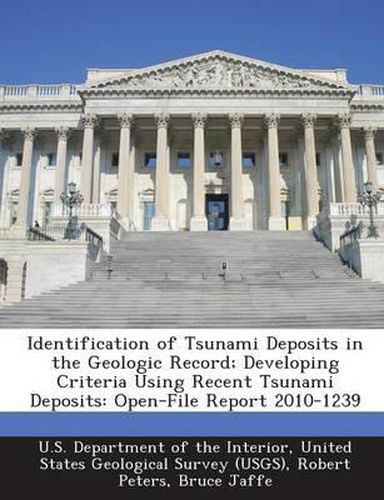Readings Newsletter
Become a Readings Member to make your shopping experience even easier.
Sign in or sign up for free!
You’re not far away from qualifying for FREE standard shipping within Australia
You’ve qualified for FREE standard shipping within Australia
The cart is loading…






There is a need for a clear procedure to identify tsunami deposits in the geologic record. Data from published studies documenting recent tsunami deposits provide a means of developing identification criteria based on the sedimentary characteristics of unequivocal tsunami deposits. Recent tsunami deposits have many sedimentary characteristics in common. All had sharp or erosional basal contacts. Sand was typically deposited in sheets that blanketed pre-existing topography and generally thinned landward. Deposit thickness was dependent on local topography; deposits were thicker in swales or local depressions and thinner on ridges or topographic highs. Deposits typically had 1-4 layers. Normal grading was common and often confined to individual layers. In muddy environments, sediments contained mud and soil rip-up clasts and mud often capped the deposits or layers. Boulders were often present, either isolated or scattered in groups. Sedimentary structures were rare, and included cross-bedding, laminations, scour and fill structures, and truncated flame structures. The composition, grain size, and surface texture of the grains reflected the coastal and nearshore source for the sediments. These sedimentary characteristics are the basis for developing site-specific tsunami deposit identification criteria that can be used in paleotsunami deposits investigations.
$9.00 standard shipping within Australia
FREE standard shipping within Australia for orders over $100.00
Express & International shipping calculated at checkout
There is a need for a clear procedure to identify tsunami deposits in the geologic record. Data from published studies documenting recent tsunami deposits provide a means of developing identification criteria based on the sedimentary characteristics of unequivocal tsunami deposits. Recent tsunami deposits have many sedimentary characteristics in common. All had sharp or erosional basal contacts. Sand was typically deposited in sheets that blanketed pre-existing topography and generally thinned landward. Deposit thickness was dependent on local topography; deposits were thicker in swales or local depressions and thinner on ridges or topographic highs. Deposits typically had 1-4 layers. Normal grading was common and often confined to individual layers. In muddy environments, sediments contained mud and soil rip-up clasts and mud often capped the deposits or layers. Boulders were often present, either isolated or scattered in groups. Sedimentary structures were rare, and included cross-bedding, laminations, scour and fill structures, and truncated flame structures. The composition, grain size, and surface texture of the grains reflected the coastal and nearshore source for the sediments. These sedimentary characteristics are the basis for developing site-specific tsunami deposit identification criteria that can be used in paleotsunami deposits investigations.